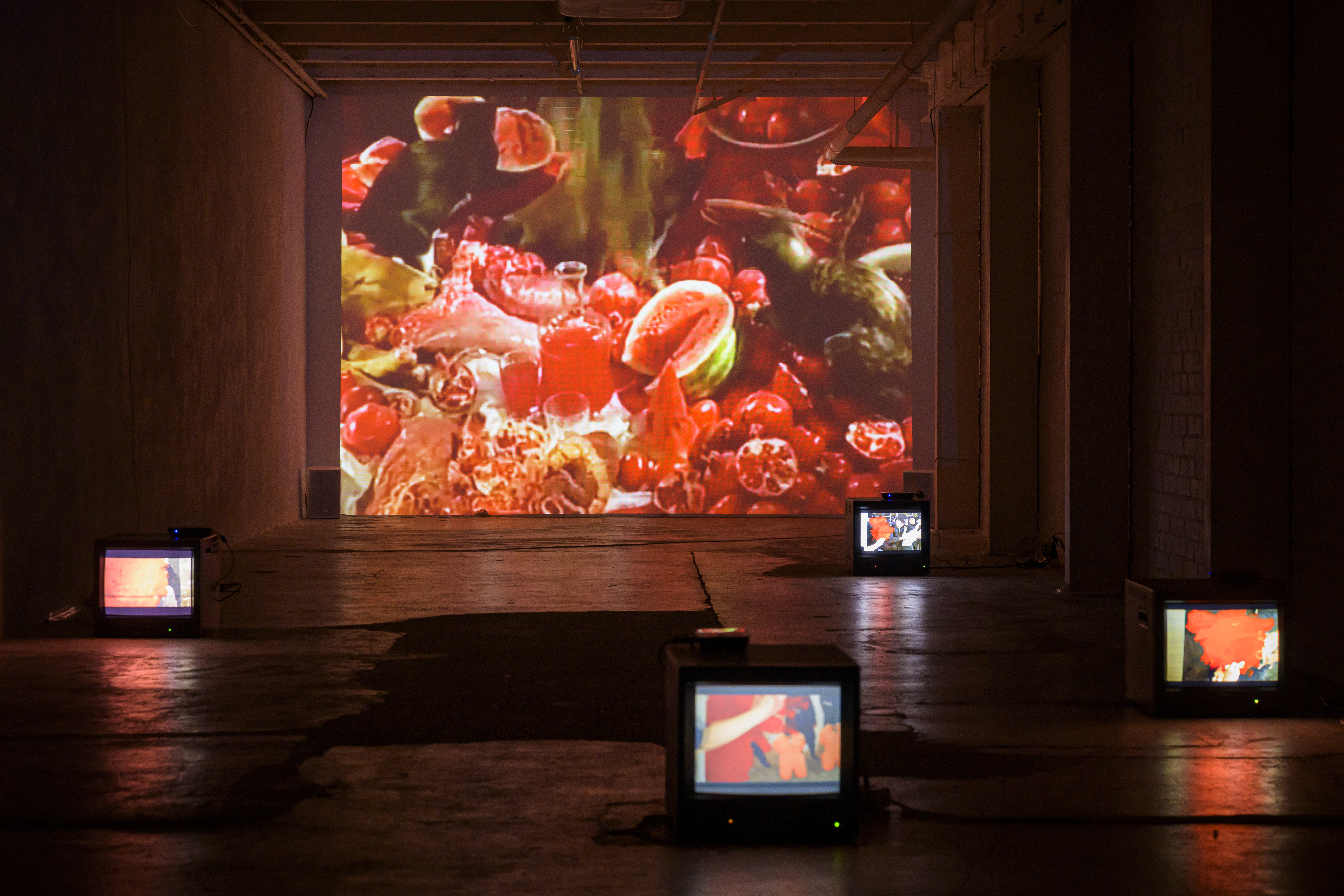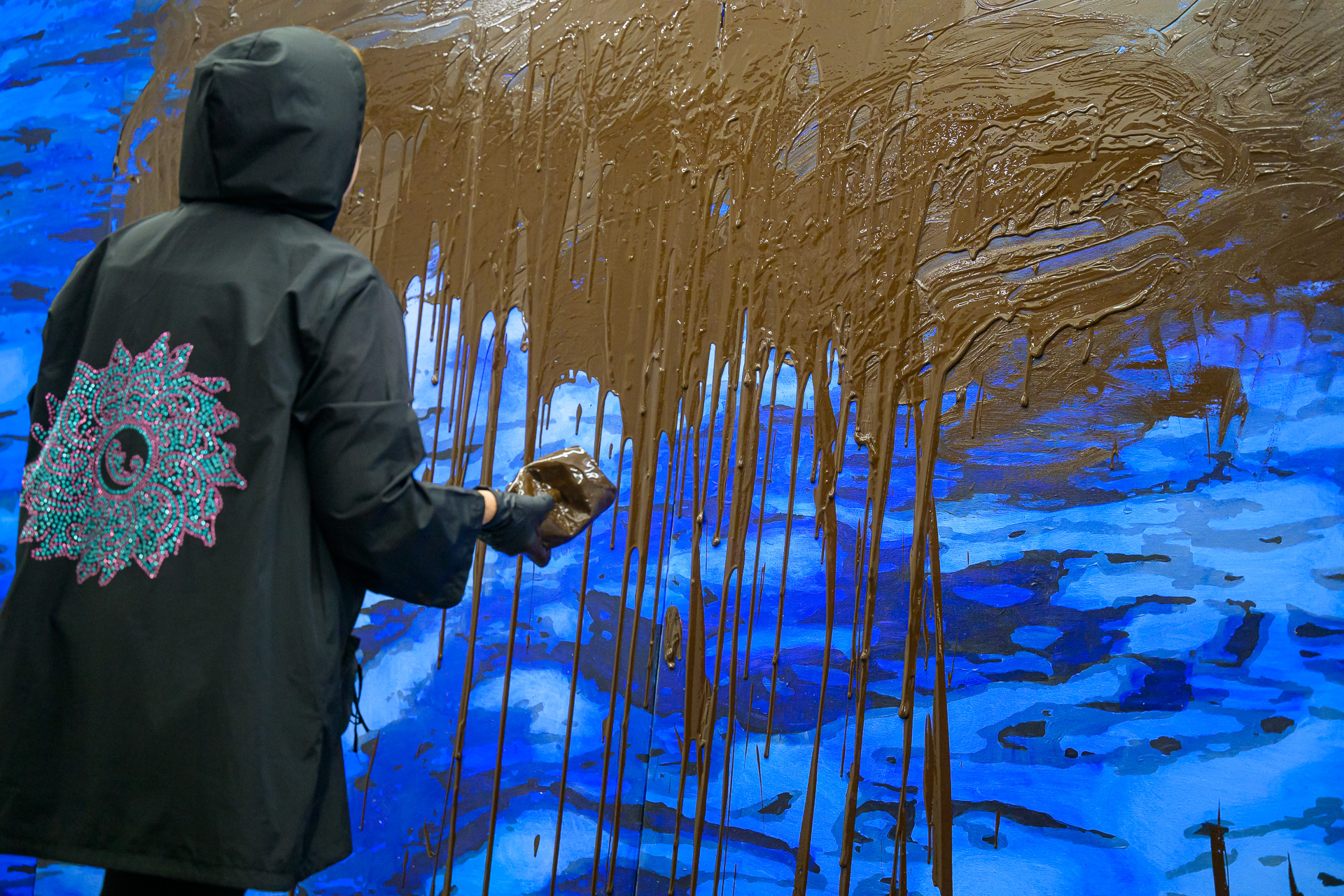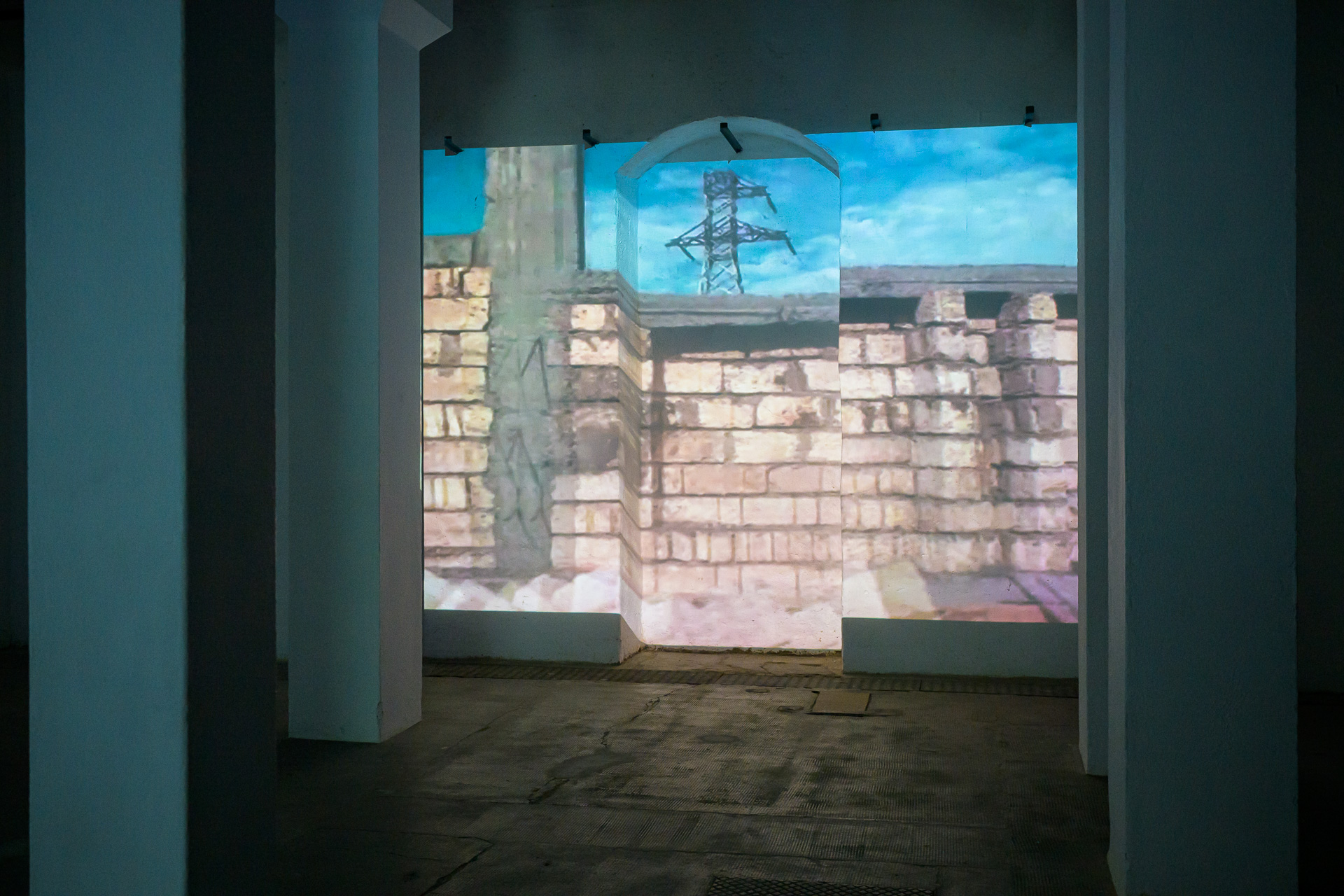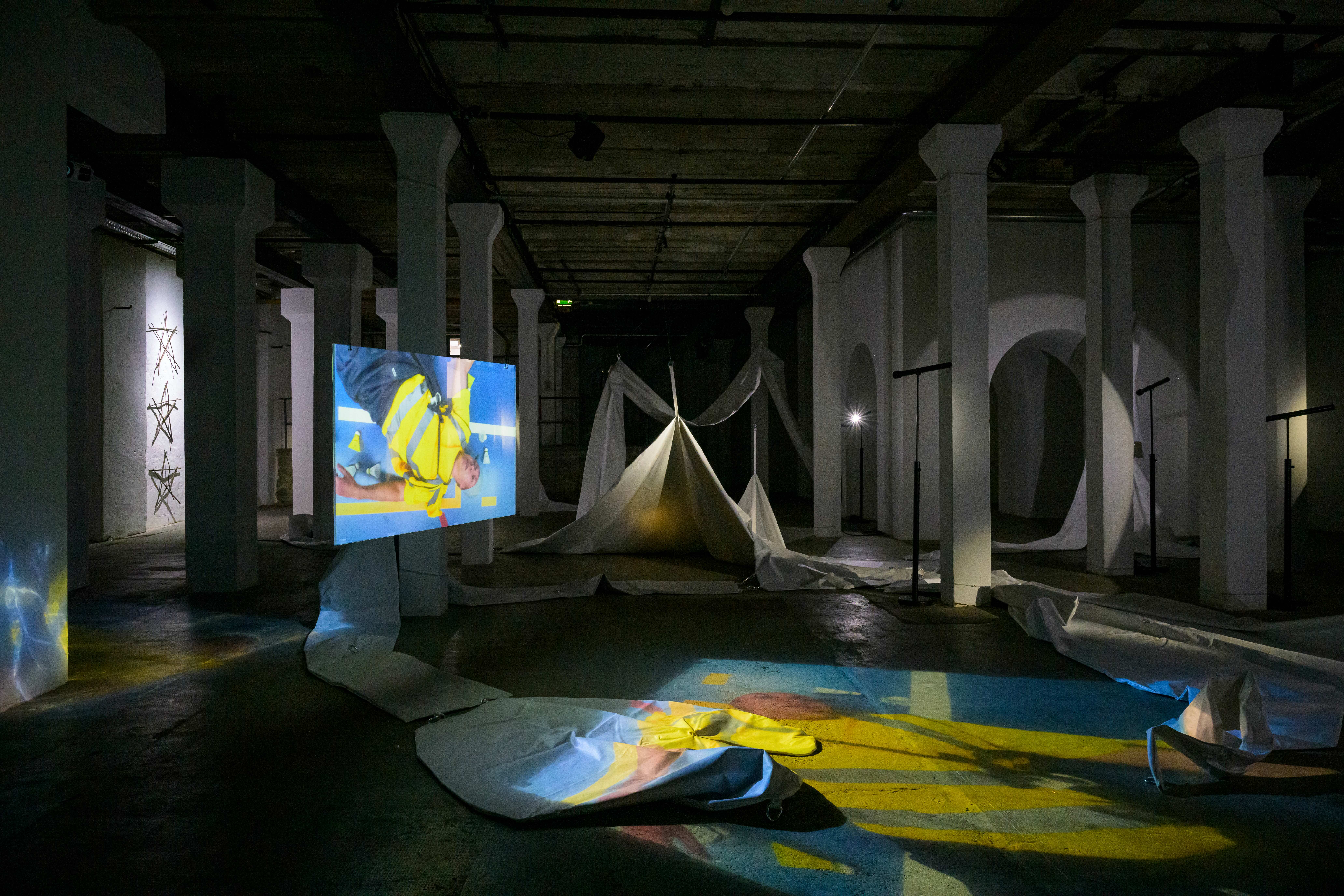Life on Borrow
June 4–July 21, 2024
Eschholzstrasse 77
Freiburg i. Br. 79106
Germany
Hours: Thursday–Friday 5–8pm
Saturday 2–8pm
Sunday 2–6pm
T +49 761 207570
ewerk@ewerk-freiburg.de
In her solo presentation Life on Borrow, the artist Sabina Shikhlinskaya, who lives in Baku, the capital of Azerbaijan, explores the ambivalent nature of the dialectic of destroying and rebuilding as a revolutionary force and as an experience of violence.
In eleven video-installations the artist addresses repressed, politically motivated violence under Soviet rule and in the present. Based on her own biography, Shikhlinskaya creates spaces of remembrance and reflection for these forgotten or suppressed aspects of history in these works.
To this end, she mirrors the supposed structure of historical progress in failed social utopias and in individual people’s experience of violence. Her art thus challenges politically motivated force, which ideologically legitimises destruction as the basis for renewal, by highlighting the fragility of human life. In doing so, Life on Borrow raises fundamental ethical questions about political violence. Under what circumstances (if any) is it justified? Who is authorised to use it? Do the ends really justify the means? How can the human desire to preserve life, communities, memories and nature be maintained and strengthened in the face of the historically relentless repetition of destruction and reconstruction?
Using allegorical and historical situations, the artist examines the utopian and dystopian effect of the dialectic of destruction and construction in Life on Borrow.
At the centre of Life on Borrow, the words destruam (Latin “I will destroy”) & aedificabo (Latin “I will rebuild”) are repeated on an LED bar as if they were a law of nature. As an articulation of a necessary dialectical force, this biblical citation is reminiscent of the idea of historical progress in anarchism and historical materialism.
However, the quote also evokes the baroque feeling of fateful destruction that Andreas Gryphius’ poems convey so impressively. Against the backdrop of the 30-year religious wars in the 17th century, the sudden turn from flourishing life into death was above all an experience of misery.
In Dangerous Red (Video Projection), the dialectic of construction and destruction is explored allegorically by means of a baroque still life. In a fight for food, two cats suddenly jump on an arrangement with fruit, raw meat, offal and glasses, carefully composed by the artist in shades of red. The unexpected leap causes an upheaval that destroys the balance and triggers chaos. With the jumbled still life, the artist refers to the domestic realm into which violence and death can enter at any time. Red as the colour of revolution embodies political violence that threatens everyday life.
Political violence in the name of dialectical progress that turned a social utopia into tyranny is the subject of Talk with Father. In this Skype interview from 2011, the artist asks her father, who was a professor of Marxist history in Baku, about the Soviet Union. Three years before the annexation of Crimea by Russia and eleven years before the war against Ukraine, the father, as a former historian of the regime, he speaks openly about the long suppressed history of political violence in the USSR, which cost at least 21 million lives. He acknowledges having known about the violence from a certain point in time, but having kept publically silent about it like many others.
Carpet Bombing demonstrates the enormous destruction caused by technically organised political violence that suddenly wipes out flourishing human lives. The artist montaged 33 b/w aerial photographs of historical and current carpet bombings projected onto a cozy, domestic carpet. They show, among others, Guernica (1937), Barcelona, London, Rotterdam, Dresden, Grozny, Aleppo (2016) and Mariupol (2022). The images, overlaid with detonation sound, portray the 20th and 21st centuries as an endless succession of destruction through war but appropriating quiet domesticity.
Politically instrumentalised violence to suppress human rights is addressed in the four-channel video Dangerous Red. In each of the videos, the artist paints over a motif on canvas with red colour. They are taken from press photography documenting political violence aimed at suppressing freedom of expression or fair trial. By painting them over with red as the colour of political protest, the artist non-violently objects to the political violence that these images bear witness to.
Curated by Heidi Brunnschweiler.
Biography
Sabina Shikhlinskaya is an established Azerbaijani artist, educator and independent curator. She graduated from Vera Mukhina Institute of Arts, St Petersburg, and from Azerbaijan State University of Culture and Arts.
Well known for her early modernistic paintings, she started to explore multimedia practices as a pioneer of conceptual art in Azerbaijan in 1990s. Using her intercultural background, her artworks engage with complex relationships between culture, politics and identity. Dealing indirectly with political issues, she balances aesthetics and concept in her works that often verge towards the poetic.
The artist has participated in numerous exhibitions as well as in biennials in Azerbaijan and internationally. She was the curator of the first Azerbaijani exhibition pavilion at 52 Venice Biennial.
Selected solo- and group-exhibitions
2023: Danger Cleared—No Mines, Yarat Centre, Baku; 2022: Essad Bey’s Ordeal, Icheri Sheher Museum Center, Palace of Shirvanshakhs; 2020: Le Biennali Invisibili, online; 2016: Dangerous Red, Solo, Casa delle Letterature, Rome, Italy; Memory and Continuity, Huma Kabakcı Collection, Pera Museum, Istanbul, Turkey; 2015: Assoziationsraum, Museum Wunderkammer, Halle, Germany; 2014: Illusions, Solo, MoMA Baku; Re-Museum, Georgian National Museum, Tbilisi; 2013: The Desire for Freedom. Art in Europe since 1945, 30th Council of Europe Exhibition, German Historical Museum, Berlin; Palazzo Reale, Milan, Italy; Kumu Kunstmuuseum, Tallinn, Estonia; 2012: Pavilion of Critical Art Ensemble, Documenta13, Kassel, Germany.
As an educator, Shikhlinskaya founded the experimental Sunday Art School in Azerbaijan (1996–97). From 2013 she has been involved in educational programs for young artists at YARAT Contemporary Art Space. In 2022 Shikhlinskaya authored the concept and started the First School of Contemporary Art in Azerbaijan in partnership with YARAT.




